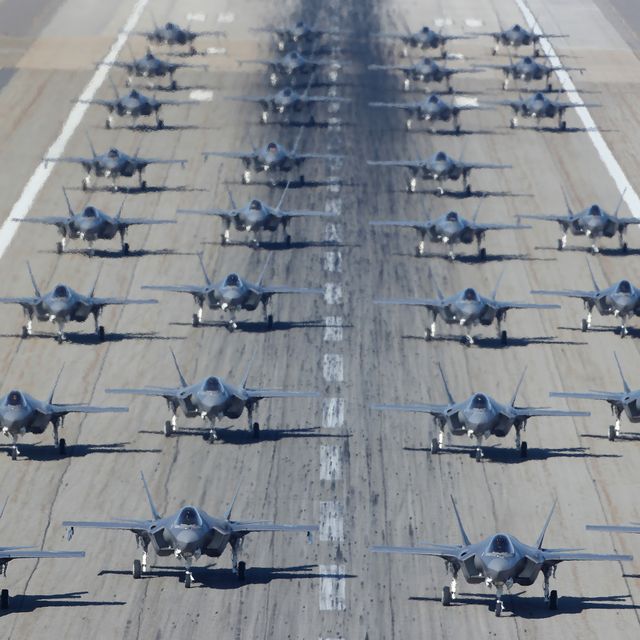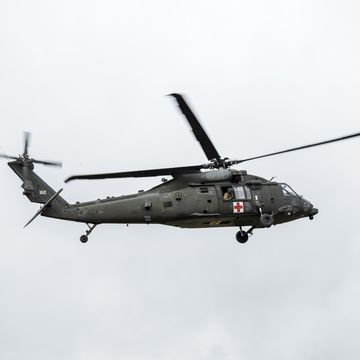- The F-35 isn’t keeping up with combat readiness goals.
- One reason might be due to a lack of spare parts and maintenance equipment.
- The F-35 has experienced various technical problems over the years.
The troubled F-35 Lightning II family of fighter jets is struggling to stay in the air.
A new report finds that the F-35 isn’t keeping up with combat readiness goals and fell behind previous records in 2022. The Pentagon’s costliest weapons program has a long way to go before it can compete with older and less expensive combat aircraft in terms of availability to fly actual missions.
Between 2021 and 2022, the F-35A’s availability dropped 11 percentage points from 65 percent to 54, according to the nonpartisan Congressional Budget Office (CBO) report. The F-35B’s availability also dipped by seven percentage points—from 61 percent to 54. Meanwhile, the F-35C’s availability jumped from 53 percent to 58 percent. The report also found that the F-35 had a lower mission-capable rate than older F-22s and F-15s.
Not all F-35s are the same, and the same holds true for their mission readiness rates. For example, the F-35A variant flown by the U.S. Air Force, which uses conventional take-off and landing, is ready to fly more of the time than the short take-off-capable Marines’ F-35Bs and the Navy’s F-35Cs.
The recent CBO study didn’t say why the F-35 has such a poor availability rate. However, a 2022 Government Accountability Office report blamed the aircraft’s problems on a lack of spare parts and maintenance equipment and on maintenance crews that lacked sufficient technical data.
The F-35 has a long history of issues, starting with cost. The Joint Strike Fighter program was launched in 2001 with ambitions to put up an entire squadron at a relatively modest price of $233 billion. Last year, however, the Pentagon estimated that the program’s cost had ballooned to $412 billion.
The Lighting II, as the F-35 is officially dubbed, has also been plagued with technical problems. There have been issues with the plane’s stealth coating, and excessive engine vibrations have also caused safety concerns.
Despite the quality control problems, the F-35 brings some unique capabilities. Manufacturer Lockheed-Martin claims the Lighting II is “the most lethal, survivable and connected fighter aircraft in the world” due to its reduced engine signature, internal carriage of weapons and fuel, and embedded sensors. The F-35 also offers exceptional situational awareness to its pilots through its advanced computing power.
Once it gets off the ground, the F-35 rules the skies with its high-tech gizmos. The Lighting II recently intercepted threatening Russian aircraft. And Australia’s military claims the pricey aircraft is ready to shoot down errant spy balloons.

Sascha Brodsky, a freelance journalist based in New York City and a graduate of the Columbia University Graduate School of Journalism and Columbia's School of International and Public Affairs, writes about many aspects of technology including personal technology, AI, and virtual reality. His work has appeared in The New York Times, The Atlantic, The Guardian, and many other publications. In his spare time, he enjoys cycling and hiking.













